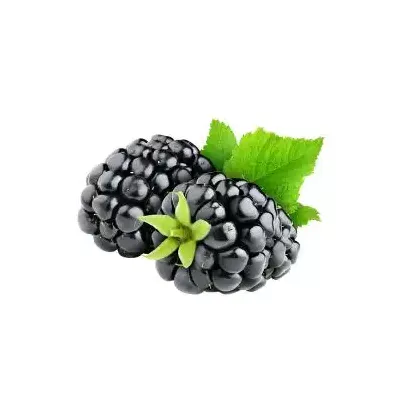



Blackberries are soft, juicy fruit that grows in clusters. Blackberry is a shrub that can be pruned and maintained to height of 5 feet or less. When ripe. Blackberries are rich in antioxidants, vitamins, and minerals. They are best suited for growing in cooler places.

Pay using UPI, Card or Netbanking

Shipping within 3 working days
Blackberries are small berry-like fruit bearing trees that belongs to the Rosaceae family.
The blackberry bush produces a small, dark berry-like fruit that is typically black or dark purple in colour. They are juicy with a sweet-tart taste. Blackberries are commonly eaten fresh.
Blackberry is just a common name used to refer to many varieties of bushy plants that produce blackberry-like fruits. There are hundreds of varieties of blackberry plants with different botanical names. These fruits, in general, have a distinct colour and flavour. Interestingly, blackberries are not botanically berries, though the fruits have a berry-like appearance.
They are high in antioxidants and are a cancer-fighting superfood. It helps increase the clotting properties of blood.
The fruit should be plump, solid, and fresh for the best flavour and results.
Blackberries varieties grow in a wide range of climatic conditions, from places with hot summers to cold winters. Also, it is adaptive to different soil types.
In India, blackberries grow in most parts of the country.
Blackberry bushes typically grow to between 6 and 12 feet in height, although some varieties can grow taller. The plant has thorny stems and leaves that are typically dark green and glossy.
Blackberries can be grown in pots. Pruning canes after harvesting is a must. It grows well in full sun or slight shade.
Blackberry plants growing in hot and humid climates are susceptible to anthracnose, a very common fungal disease among plants. This is identified by the brown spots on its leaves and canes.
Spraying a fungicide like SAAF or CONTAF, especially during the rainy season, is recommended.
This can also prevent other fungal diseases like orange rust and cane blight.
Rarely, it gets affected by a viral disease called double blossom. The flowers are formed as clusters in this case. The fruits produced are small and of inferior quality. Since it cannot be cured, remove the affected plant at the earliest possible time to prevent further spread to other plants.
Removing dead or decayed canes is a good practice for keeping the plant disease-free.
Data sheet